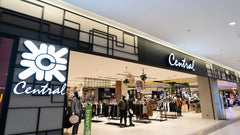Guide Dogs Launches Accessible Beauty Guidelines to Break Barriers for Australians with Disabilities
Table of Contents
- Key Highlights
- Introduction
- The Current State of Accessibility in Beauty
- The Launch of Accessible Beauty Guidelines
- Expert Opinions on Accessibility in Beauty
- Case Studies of Brands Leading the Way
- Implications for the Future of the Beauty Industry
- The Road Ahead
- Conclusion
- FAQ
Key Highlights
- Over 500,000 Australians face daily challenges accessing beauty products due to a lack of inclusivity in the industry.
- Guide Dogs NSW/ACT has launched Australia’s first “Accessible Beauty Guidelines” to encourage brands to enhance accessibility.
- The initiative aims to foster a beauty industry that caters to the diverse needs of all consumers, including those with visual impairments.
Introduction
Imagine standing in the personal care aisle of a supermarket, staring at rows of products, but unable to distinguish between them due to their packaging design. For more than half a million Australians with disabilities, this is a daily reality. The beauty industry, often celebrated for its innovation and creativity, has largely overlooked the needs of people with disabilities. However, a new initiative by Guide Dogs NSW/ACT is set to change that. The launch of Australia’s first “Accessible Beauty Guidelines” aims to transform the way beauty brands approach product design and marketing, making beauty accessible for everyone. This article delves into the implications of this initiative and its significance in fostering inclusivity across the beauty landscape.
The Current State of Accessibility in Beauty
The beauty industry has traditionally catered to a narrow demographic, primarily focusing on able-bodied, sighted consumers. According to a report by Guide Dogs NSW/ACT, 500,000 Australians have disabilities that hinder their ability to access everyday products. This includes not only cosmetics but also essentials like shampoo and sunscreen. The lack of accessible packaging, labeling, and marketing strategies has perpetuated a cycle of exclusion.
Key Barriers Faced
- Packaging Design: Many beauty products use small fonts and visual cues that are difficult for visually impaired individuals to perceive.
- Product Information: A lack of Braille labeling means that crucial information about ingredients and usage is often inaccessible.
- In-store Experience: Navigating stores can be daunting for those who rely on touch and auditory cues, as store layouts often do not consider accessibility.
The Launch of Accessible Beauty Guidelines
In response to these challenges, Guide Dogs NSW/ACT launched the Accessible Beauty Guidelines in June 2023. This landmark initiative encourages beauty brands to adopt practices that prioritize accessibility. The guidelines serve as a comprehensive framework, outlining practical steps companies can take to make their products more inclusive.
What the Guidelines Include
- Clear Labeling: Recommendations for using larger fonts, contrasting colors, and Braille on packaging.
- Auditory Information: Encouragement for brands to create apps or use QR codes where consumers can access product information through audio.
- Inclusive Marketing: Strategies for representing diverse consumers in advertising campaigns, including models with disabilities.
- Store Design: Suggestions for layout changes that make shopping more navigable for all consumers.
Expert Opinions on Accessibility in Beauty
The launch of the Accessible Beauty Guidelines has garnered attention from industry experts and advocates for disability rights. Professor Anna McGowan, an expert in inclusive design at the University of Sydney, emphasizes the importance of these guidelines. "Accessibility is not just a moral obligation; it's a business opportunity. By catering to a broader audience, brands can expand their market share and build loyalty among consumers who feel represented."
The Economic Argument for Inclusivity
Research shows that inclusive design can lead to significant economic benefits. According to a study by the British Institute of Innovation and Technology, inclusive products can reach an estimated $8 trillion global market. Beauty brands that embrace accessibility not only serve a vital social need but also tap into a lucrative market segment.
Case Studies of Brands Leading the Way
Several beauty brands have already taken steps toward inclusivity, demonstrating that it is possible to embrace accessibility while maintaining brand identity.
Lush Cosmetics
Lush has long been an advocate for ethical practices, and their commitment to accessibility is no exception. The brand offers a range of products with clear labeling, and many of their stores feature sensory-friendly spaces for shoppers with disabilities.
CoverGirl
CoverGirl has made headlines for its inclusive marketing campaigns, featuring models of varying abilities and backgrounds. Their “#GirlsCan” initiative promotes messages of empowerment, encouraging all women to embrace their uniqueness.
Fenty Beauty
Founded by Rihanna, Fenty Beauty has disrupted the beauty industry by offering a diverse range of shades for all skin tones. Their commitment to inclusivity extends to their marketing, which showcases models with disabilities, setting a standard for others to follow.
Implications for the Future of the Beauty Industry
The introduction of the Accessible Beauty Guidelines is a pivotal moment for the beauty industry in Australia. If widely adopted, these practices could initiate a cultural shift where inclusivity becomes the norm rather than the exception. Here are some potential developments that could arise from this movement:
Enhanced Collaboration
The guidelines may foster partnerships between beauty brands and organizations that advocate for people with disabilities. Collaborative efforts can lead to the creation of innovative products designed with accessibility in mind.
Policy Changes
As consumer awareness grows, there may be calls for regulatory changes mandating accessibility standards in product design and marketing. Countries like the United States and the United Kingdom have already implemented regulations that could serve as models for Australia.
Consumer Empowerment
With greater accessibility, consumers with disabilities will feel empowered to engage with beauty brands. This could lead to increased sales and a loyal customer base that values inclusivity.
The Road Ahead
While the launch of the Accessible Beauty Guidelines marks a significant step forward, the journey toward a fully inclusive beauty industry is ongoing. Brands must be committed to not only adopting the guidelines but also continually evaluating and improving their accessibility practices.
Community Engagement
Engaging with the community is essential. Beauty brands should seek feedback from consumers with disabilities to understand their needs better and adapt accordingly. This could involve focus groups, surveys, and collaborations with advocacy organizations.
Continuous Education
Educating employees about the importance of accessibility is crucial. Training programs can help staff understand the challenges faced by consumers with disabilities and equip them to provide better customer service.
Conclusion
The launch of Australia’s Accessible Beauty Guidelines by Guide Dogs NSW/ACT is a crucial initiative aimed at dismantling the barriers that have long excluded individuals with disabilities from the beauty industry. By advocating for accessible design and inclusive marketing, the guidelines not only promote social equity but also present a significant economic opportunity for beauty brands. As the industry embraces these changes, it paves the way for a future where beauty is truly for everyone.
FAQ
What are the Accessible Beauty Guidelines?
The Accessible Beauty Guidelines are a framework launched by Guide Dogs NSW/ACT to help beauty brands create products that are accessible to individuals with disabilities.
Why is accessibility important in the beauty industry?
Accessibility ensures that all consumers, regardless of their abilities, can access and enjoy beauty products. It promotes inclusivity and allows brands to tap into a broader market.
How can beauty brands implement these guidelines?
Brands can implement the guidelines by improving product labeling, creating auditory information resources, engaging in inclusive marketing, and redesigning store layouts for better navigation.
What impact do these guidelines have on consumers?
The guidelines empower consumers with disabilities by allowing them to independently access and use beauty products, fostering a sense of inclusion and representation in the beauty landscape.
Are there other countries with similar initiatives?
Yes, several countries have introduced accessibility standards in various industries, including beauty. The UK and the US have implemented regulations that could serve as models for Australia’s guidelines.
POWER your ecommerce with our weekly insights and updates!
Stay aligned on what's happening in the commerce world
Email Address
Handpicked for You

25 June 2025 / Blog
Central Online Enhances E-Commerce Experience with Algolia's AI Search Platform
Read more
25 June 2025 / Blog
The Rise of Retailer Referral Services: A New Path for Auto Dealerships
Read more25 June 2025 / Blog
